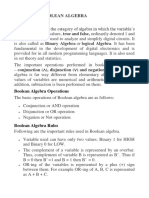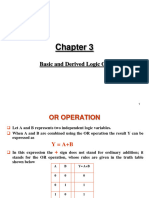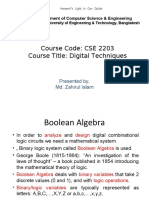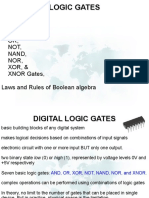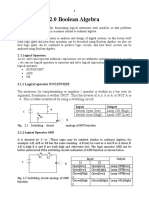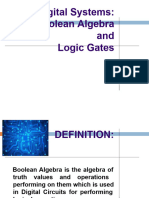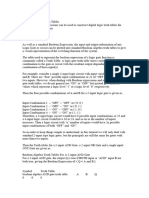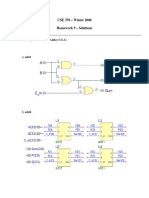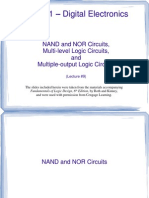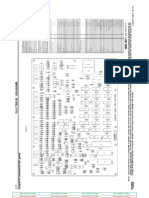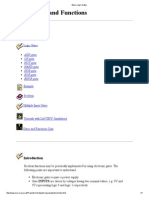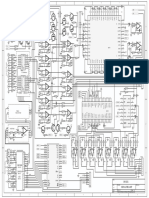0% found this document useful (0 votes)
9 views7 pagesCh-3 Boolean Logic
The document provides an overview of Boolean Algebra, including definitions of Boolean variables, operators, and truth tables. It explains the basic logic gates (AND, OR, NOT, NAND, NOR, XOR) and their functions, along with De Morgan's Laws that relate to negation in Boolean expressions. Logic gates serve as essential components in digital systems, allowing for the representation of Boolean expressions through circuit diagrams.
Uploaded by
adityarohilla7289094042Copyright
© © All Rights Reserved
We take content rights seriously. If you suspect this is your content, claim it here.
Available Formats
Download as PDF, TXT or read online on Scribd
0% found this document useful (0 votes)
9 views7 pagesCh-3 Boolean Logic
The document provides an overview of Boolean Algebra, including definitions of Boolean variables, operators, and truth tables. It explains the basic logic gates (AND, OR, NOT, NAND, NOR, XOR) and their functions, along with De Morgan's Laws that relate to negation in Boolean expressions. Logic gates serve as essential components in digital systems, allowing for the representation of Boolean expressions through circuit diagrams.
Uploaded by
adityarohilla7289094042Copyright
© © All Rights Reserved
We take content rights seriously. If you suspect this is your content, claim it here.
Available Formats
Download as PDF, TXT or read online on Scribd
/ 7


